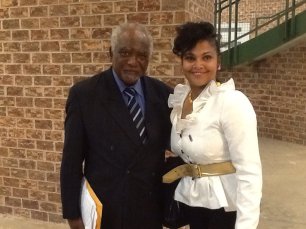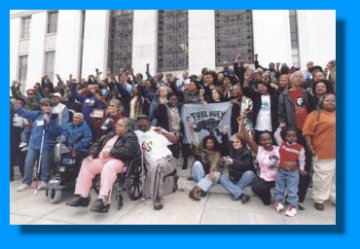
Black Panther 40th Reunion in Oakland, Ca.
While we remember our veterans for whom we are deeply grateful, let us also take time to appreciate those “veterans of the city wars” fought for peace and freedom. In addition to those fighting in the U. S. Armed Forces, there are many who went up against “armed forces” while fighting in the streets for the civil rights promised to African-Americans and all Americans. Many of our rights were written “on paper“, however, many of the leaders fighting for our rights were portrayed “in papers” as villains, imprisoned, beat or assassinated.
COINTELPRO
Many Black groups speaking against poverty, unemployment, unequal rights, war, etc. were targeted by our government. The Counter Intelligence Program (COINTELPRO) FBI Director J. Edgar Hoover issued directives governing COINTELPRO, ordering FBI agents to “expose, disrupt, misdirect, discredit, or otherwise neutralize” the activities of these movements and their leaders. This operation was started shortly after the Black Panther Party was formed. Eighty-Five percent of its resources were used against Southern Christian Leadership Conference, the National Association for the Advancement of Colored People, the Congress of Racial Equality, other civil rights organizations; black nationalist groups; and the American Indian Movement. The other 15% was used on white hate groups, including the Ku Klux Klan even though the Klan had lynched/killed thousands of blacks, bombed many of their families, churches and homes.
Fred Hampton
Chicago’s Black Panther leader, was brutally murdered by the police in a raid soon to be forty-four years ago on the Chicago’s West side. Months later, a

Fred Hampton
federal investigation showed that only one shot was fired by the Panthers, although that number remained in dispute. Police fired 82 to 99 shots. Many saw this raid as a pretext to kill Fred Hampton, 21 years old. As he stated, “You have to understand that people have to pay the price for peace. You dare to Struggle, you dare to win.” Mr. Hampton also said, ” You can kill a revolutionary, but you can never kill the revolution.”
Geronimo Pratt
Geronimo studied political science at UCLA using a GI Bill from his service in the army. As a Black Panther leader, he was wrongfully imprisoned for a 1972 kidnapping and murder for 27 years, while 8 of those years were in solitary confinement. Johnny Cochran was on his legal defense team, who was known for “defending the underdog”. While in prison, Pratt studied law, built a defense, and together got his conviction vacated. He was freed in 1997,

Geronimo Pratt
eventually receiving $4.5 million as civil suit settlement for false imprisonment, with $2.75m being paid by L. A. and $1.75m by U. S. Dept. of Justice. He was working as a human rights activist up until the time of his death. He helped others believed to be wrongly imprisoned such as journalist and fellow Black Panther, Mumia Abu-Jamal. He was removed from death row in 2012, after Pratt’s death in 2011 in his adopted land of Tanzania of East Africa. He was also the godfather of the late rapper Tupac Shakur.
Dr. Huey Newton
Seale and Newton, heavily inspired by Malcolm X, a civil rights leader assassinated in 1965, and his teachings, joined together in October 1966 to create the Black Panther Party for Self Defense and adopt the slain activist’s slogan “Freedom by any means necessary” as their own. Seale became the chairman of the Black Panther Party and underwent FBI surveillance as part of its COINTELPRO program. Newton earned a Ph.D. in Social

Huey Newton
Science. Huey spent time in prison for manslaughter and later was fatally shot three times in the head in 1989 after leaving a crack house by a member of the Black Guerilla Family. Unfortunately, even some veterans “in the US Armed Forces” became hooked on drugs as well. In 2011, it was estimated that 35% of soldiers were addicted to prescription drugs – illegal drug addictions are also quite concerning. Spike Lee made a movie, The Huey P. Newton Story in 2001. The movie was initially created, written and performed, as a solo performance, by Roger Guenveur Smith.
Bobby Hutton
Bobby was recruited by Huey Newton and Bobby Seale. He and Bobby were also some of the Panthers who rallied at their capital against the Mulford Act, a bill that would prohibit carrying loaded firearms in public and was arrested for carrying a gun. Bobby Hutton was killed at age 17 at an ambush against police a week after Dr. King’s assassination.
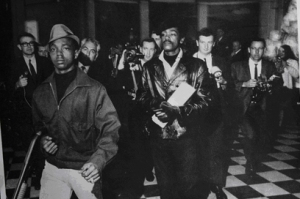
Bobby Hutton, Bobby Seale and other Black Panthers at Capital protesting Mulford Act.
Eldridge Cleaver said, “police shot Bobby more than a dozen times after he had surrendered and had stripped down to his underwear to prove that he was unarmed.” Being the first Black Panther killed, he became a martyr for the cause. Thousands attended Lil Bobby’s funeral, including actor Marlon Brando and author James Baldwin. As of 1998, Lil’ Bobby Day is celebrated April 11th in California. His grave just received a headstone one decade ago.
Irene Morgan
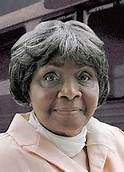
Irene Morgan
In 1944, a bus driver tried to make a black lady, Irene Morgan, give up her seat to whites. Ms. Morgan refused, spoke up and was represented by the NAACP in the Supreme Court which struck down laws for segregated seating on interstate travel. This sparked the Freedom Riders led by James Farmer. In 1944, Rosa Parks was helping the NAACP investigate the gang rape of Recy Taylor in Alabama which was around a decade before Rosa refused to give up her seat which led to the Montgomery Bus Boycott.
James L. Farmer
Farmer is also known as one of the “big four” civil rights leaders. When he was 21, First Lady Eleanor Roosevelt invited him to the White House for a conversation with the president. In the following year, 1942, Farmer co-founded what later became the Congress for Racial Equality (CORE) which was integrated by gender and race.
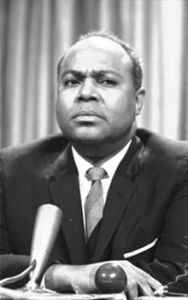
James Farmer
Despite the victory of Irene Morgan vs. Virginia (1946) and Boynton v. Virginia (1960) to integrate interstate travel, southern states didn’t abide by it. Farmer is known for helping pioneer the dangerous “Freedom Rides”

Freedom Riders Burning Bus, 1961
to integrate buses. Some of their routes had been ambushed by the KKK and the bus was firebombed while the doors were held closed near Anniston, Al. An explosion actually caused the hatemongers to release the doors allowing the freedom riders to escape. They were still beaten. Most were refused care at the hospital and those who did get admitted, were tossed out due to angry mobs outside. Attorney General Kennedy sent a helper but at another stop, KKK beat the riders with bats and iron pipes. The Freedom Riders 50th Anniversary was celebrated in 2011.
Stokely Carmichael
Carmichael was a freedom train rider who also 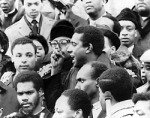 was a leader of SNCC and the Black Panther Party. He was one of the riders sent to Parchman prison for more than a month and a half. “A call went out across the country to keep the Freedom Rides going and ‘fill the jails‘ of Mississippi” with freedom riders. While being hurt one time in jail as a rider, Carmichael began singing to the guards, “I’m gonna tell God how you treat me,” and the prisoners joined in. The governor was said to instruct guards to “break their spirit, not their bones. Stokely kept spirits up of the prisoners in jail by telling jokes. Many sang freedom songs which they felt fortified their unity, purpose and spirits. He later changed his name to Kwame Ture after rejecting the Black Panthers as not being separatists as he served political leaders in Ghana. The anniversary of his death of 15 years is this month.
was a leader of SNCC and the Black Panther Party. He was one of the riders sent to Parchman prison for more than a month and a half. “A call went out across the country to keep the Freedom Rides going and ‘fill the jails‘ of Mississippi” with freedom riders. While being hurt one time in jail as a rider, Carmichael began singing to the guards, “I’m gonna tell God how you treat me,” and the prisoners joined in. The governor was said to instruct guards to “break their spirit, not their bones. Stokely kept spirits up of the prisoners in jail by telling jokes. Many sang freedom songs which they felt fortified their unity, purpose and spirits. He later changed his name to Kwame Ture after rejecting the Black Panthers as not being separatists as he served political leaders in Ghana. The anniversary of his death of 15 years is this month.
Many other great civil rights leaders were assassinated while fighting for country’s freedoms including Dr. Martin Luther King Jr, Malcolm X, Medgar Evers, President John F. Kennedy, U. S. Senator Robert Kennedy and many more. Today’s freedoms have become more tangible because of the vision and sacrifice of these leaders. Below, are leaders who are some of the survivors of those movements and are still “keeping the good fight”! This brief list does not touch our iceberg of leaders such as Gen. Colin Powell, Rev. Al Sharpton, Rev. Jesse Jackson, Congressman John Lewis, Marian Wright Edelman – but these are some that are not mentioned as often.
Rep. Bobby Rush
A Black Panther later becoming a U. S. Representative of Illinois for the
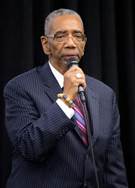
Rep. Bobby Rush (IL)
Chicago area since 1993. Rep. Bobby Rush, along with the Congressional Black Caucus, recently organized a

Rep. Jackson(Tx), Bren, Rep. Bobby Rush
National Emergency Violence Summit in Chicago this summer. I was proud to attend this summit in my hometown. Rep. Rush also recently led a tour with U. S. Illinois Senator Kirk through Englewood, one of the hot spots of violence in Chicago. He wanted to show the link between violence and the real issues of creating jobs and providing affordable housing. Follow @RepBobbyRush.
Bobby Seale
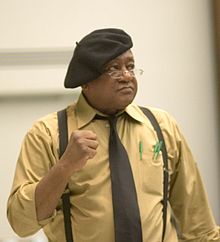
Bobby Seale
Co-founder of the Black Panther Party also targeted by CoIntelPro. Bobby Seale was with Lil Bobby Hutton when the protested in Sacramento against the Mulford Act, which would thwart their legal right to patrol the police with guns as they felt it necessary to defend themselves against police brutality. He was added to a charged group making it the “Chicago Eight” defendants for conspiracy and inciting to riot, in the wake of the 1968 Democratic National Convention, in Chicago. The trial of the Chicago Eight was depicted in the 1987 HBO television movie Conspiracy: The Trial of the Chicago 8, whose script relied heavily upon transcripts from the court proceedings. The Black Panther Party celebrated its 47th anniversary last month where Bobby Seale was on the agenda and 40 year anniversary in 2006 in California. Bobby cooks now and has a book, Barbeque’ N with Bobby. Follow @BobbySealeCom.
Dr. Angela Davis
 Do you believe stories that Angela Davis was a criminal or a Black Panther? Well, she was neither! This revolutionary was wrongfully accused of murder and found innocent. Dr. Davis studied French in Paris, earned her doctorate in Germany and was teaching at UCLA. Recently a documentary, Free Angela, by Shola Lynch was released about her struggle to clear her name. Leaders like her are still relevant to today’s challenges and progress. Prisoner rights have been among her continuing interests; she is the founder of Critical Resistance, an organization working to abolish the prison-industrial complex. She is a retired professor with the History of Consciousness Department at the University of California, Santa Cruz, and is the former director of the university’s Feminist Studies department.
Do you believe stories that Angela Davis was a criminal or a Black Panther? Well, she was neither! This revolutionary was wrongfully accused of murder and found innocent. Dr. Davis studied French in Paris, earned her doctorate in Germany and was teaching at UCLA. Recently a documentary, Free Angela, by Shola Lynch was released about her struggle to clear her name. Leaders like her are still relevant to today’s challenges and progress. Prisoner rights have been among her continuing interests; she is the founder of Critical Resistance, an organization working to abolish the prison-industrial complex. She is a retired professor with the History of Consciousness Department at the University of California, Santa Cruz, and is the former director of the university’s Feminist Studies department.
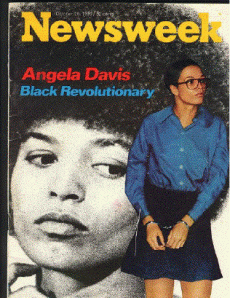
Angela Davis
Her work and our struggle continues. As she stated, “I think the importance of doing activist work is precisely because it allows you to give back and to consider yourself not as an individual who may have achieved whatever but to be a part of an ongoing historical movement.” Follow @FreeAngelaFilm.
Mumia Abu-Jamal- Controversy
Journalist Abu-Jamal had been a target of CoIntelPro. In 1980, at the age of 26, Mumia was elected president of the Philadelphia chapter of the National Association of Black Journalists. The following year, he was named one of the city’s “People to Watch” by Philadelphia Magazine. The article spoke of his “eloquent, often passionate and always insightful interviews.” He had recently lost his radio journalist job with National Public Radio before he was accused of killing a Philadelphia police officer, Daniel Faulkner in 1981, who had served in the U. S. Army. A debate continues, “Has Abu-Jamal been imprisoned justly or unjustly?” He was sentenced to death but received a new capital sentencing hearing. His lawyer said that the results constituted “extraordinarily important new evidence that establishes clearly that the prosecutor and the Philadelphia

Mumia Abu-Jamal
Police Department were engaged in presenting knowingly false testimony“. In this transcript, there is a comment by a witness that the police made her falsely testify against Mumia. He was removed from death row in 2012, but was not granted a retrial. Some critics wonder why his younger brother, William Cook, did not testify on Jamal’s (born Wesley Cook) behalf at the 1982 trial. He could not be found but witnessed the crime as he was driving the Volkswagen when Officer Faulkner pulled him over. Abu-Jamal had been associated with and had given voice to the MOVE group to which the Philadelphia Police Department was antagonistic. In 1978, over 600 police raided MOVE’s home with guns and arrested Move-9. All were sentenced to over 30 years in prison. Interestingly, Abu-Jamal was one of the reporters who covered this story. Mumia Abu-Jamal spoke out from the crowd of journalists, sharply raising questions about the way police had destroyed evidence after the raid. Through a call on the radio, Mumia aka “William Wellington Cole” got Judge Mahmed of the case to admit he had “no idea” who the murderer was, which highlighted the miscarriage of justice of the imprisonment of the MOVE-9. Such acts earned him his grassroots moniker, “The Voice of the Voiceless.“
Reportedly, “A police report later that night shows that Civil Affairs inspector Fencl was quickly called into this investigation. Fencl was the same police official who gave the order to strip Black Panthers in the street in 1970 (and photographed for the papers to humiliate them before their convention), who planned the raid on MOVE’s Powelton home and who headed the political police unit that had spied on Mumia since he was 15…. In 1974 two pregnant women from MOVE were man-handled by cops until they miscarried. MOVE’s demonstrations intensified. The police responded with a campaign of “arrest on sight.” Between 1974 and 1976, there were 400 arrests of MOVE members, resulting in bail and fines of more than half a million dollars. Life Africa, a three-week-old baby, was killed during one violent police attack.” Later in 1985, MOVE’s house was attacked and bombed by police, killing children, MOVE founder– John Africa, and others while destroying over 50 homes.
Abu-Jamal wrote books, notably 1995’s Live from Death Row, which deals with prison, social and political issues. There is a petition seeking his release. He is the subject of the song, “Voice Of The Voiceless” by Rage Against the Machine. A controversial film was made in 2010 by Tigre Hill. Stephen Vittoria made a film about him, Long Distance Revolutionary. You can follow @MumiaAbuJamal and @LDRMovie. Presidents Jacques Chirac of France and Nelson Mandela of South Africa, Foreign Ministers Kinkel of Germany and Derijcke of Belgium, and members of the Japanese Diet have urged the U.S. to grant Jamal a new trial. Officer Daniel Faulkner’s wife, Maureen, still contends that the rightfully convicted murderer of her husband is in jail.
I think the importance of doing activist work is precisely because it allows you to give back and to consider yourself not as a single individual who may have achieved whatever but to be a part of an ongoing historical movement. Read more at
http://www.brainyquote.com/quotes/quotes/a/angeladavi368084.html#lH2155h1Yhciv1Xb.99I think the importance of doing activist work is precisely because it allows you to give back and to consider yourself not as a single individual who may have achieved whatever but to be a part of an ongoing historical movement. Read more at
http://www.brainyquote.com/quotes/quotes/a/angeladavi368084.html#lH2155h1Yhciv1Xb.99I think the importance of doing activist work is precisely because it allows you to give back and to consider yourself not as a single individual who may have achieved whatever but to be a part of an ongoing historical movement. Read more at
http://www.brainyquote.com/quotes/quotes/a/angeladavi368084.html#lH2155h1Yhciv1Xb.99Also read DebateandSwitch’s:
 Americans have many values that we hold dearly. As shared in Real Family Values: Child Care and Early Childhood Education, “Americans hold few values dearer than equality, fairness, and opportunity, and high-quality early education is a key tool that helps level the playing field for children from low-income families. Access to high-quality child care and early childhood education has been shown to set children on a path to success, and it is one of the most important tools we have to break the cycle of poverty that exacerbates inequality in the United States. Early learning is also known to prepare children for school, but studies of Head Start participants have also shown that children who receive quality childhood education are healthier, stay in school longer, and earn more in their futures.”
Americans have many values that we hold dearly. As shared in Real Family Values: Child Care and Early Childhood Education, “Americans hold few values dearer than equality, fairness, and opportunity, and high-quality early education is a key tool that helps level the playing field for children from low-income families. Access to high-quality child care and early childhood education has been shown to set children on a path to success, and it is one of the most important tools we have to break the cycle of poverty that exacerbates inequality in the United States. Early learning is also known to prepare children for school, but studies of Head Start participants have also shown that children who receive quality childhood education are healthier, stay in school longer, and earn more in their futures.”



















 stamps as those who “won’t” work. According to the
stamps as those who “won’t” work. According to the  Rep.
Rep.  Family Engagement in children’s
Family Engagement in children’s 

 and thoughts of injuring others. “The participants took part in interviews and completed two tests to assess their depression and anxiety levels. Between 1998 and 2009, the number of students coming into counseling who were diagnosed with at least one mental disorder increased 3 percent, from 93 percent to 96 percent. The percentage diagnosed with moderate to severe depression increased from 34 percent to 41 percent,” said John Guthman, Director of Student Counseling Services at Hofstra University in New York.
and thoughts of injuring others. “The participants took part in interviews and completed two tests to assess their depression and anxiety levels. Between 1998 and 2009, the number of students coming into counseling who were diagnosed with at least one mental disorder increased 3 percent, from 93 percent to 96 percent. The percentage diagnosed with moderate to severe depression increased from 34 percent to 41 percent,” said John Guthman, Director of Student Counseling Services at Hofstra University in New York.


